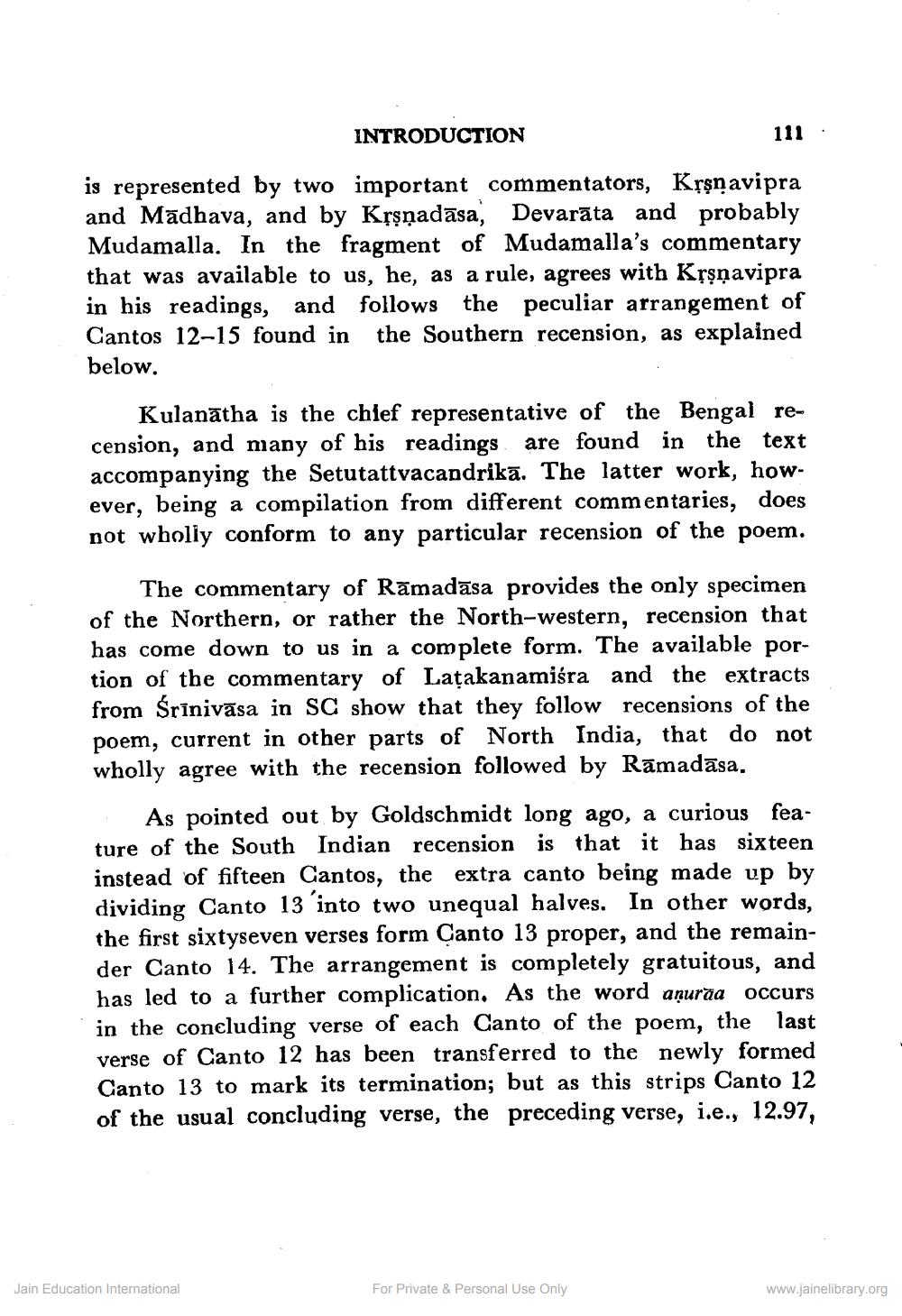________________
INTRODUCTION
111. is represented by two important commentators, Krşnavipra and Madhava, and by Krşņadāsa, Devarāta and probably Mudamalla. In the fragment of Mudamalla's commentary that was available to us, he, as a rule, agrees with Krşņavipra in his readings, and follows the peculiar arrangement of Cantos 12-15 found in the Southern recension, as explained below.
Kulanātha is the chief representative of the Bengal recension, and many of his readings are found in the text accompanying the Setutattvacandrikā. The latter work, however, being a compilation from different commentaries, does not wholly conform to any particular recension of the poem.
The commentary of Rāmadāsa provides the only specimen of the Northern, or rather the North-western, recension that has come down to us in a complete form. The available portion of the commentary of Laţakanamiśra and the extracts from Srinivāsa in SC show that they follow recensions of the poem, current in other parts of North India, that do not wholly agree with the recension followed by Ramadāsa.
As pointed out by Goldschmidt long ago, a curious feature of the South Indian recension is that it has sixteen instead of fifteen Cantos, the extra canto being made up by dividing Canto 13 into two unequal halves. In other words, the first sixtyseven verses form Canto 13 proper, and the remainder Canto 14. The arrangement is completely gratuitous, and has led to a further complication. As the word anuraa occurs in the concluding verse of each Canto of the poem, the last verse of Canto 12 has been transferred to the newly formed Canto 13 to mark its termination; but as this strips Canto 12 of the usual concluding verse, the preceding verse, i.e., 12.97,
Jain Education International
For Private & Personal Use Only
www.jainelibrary.org




